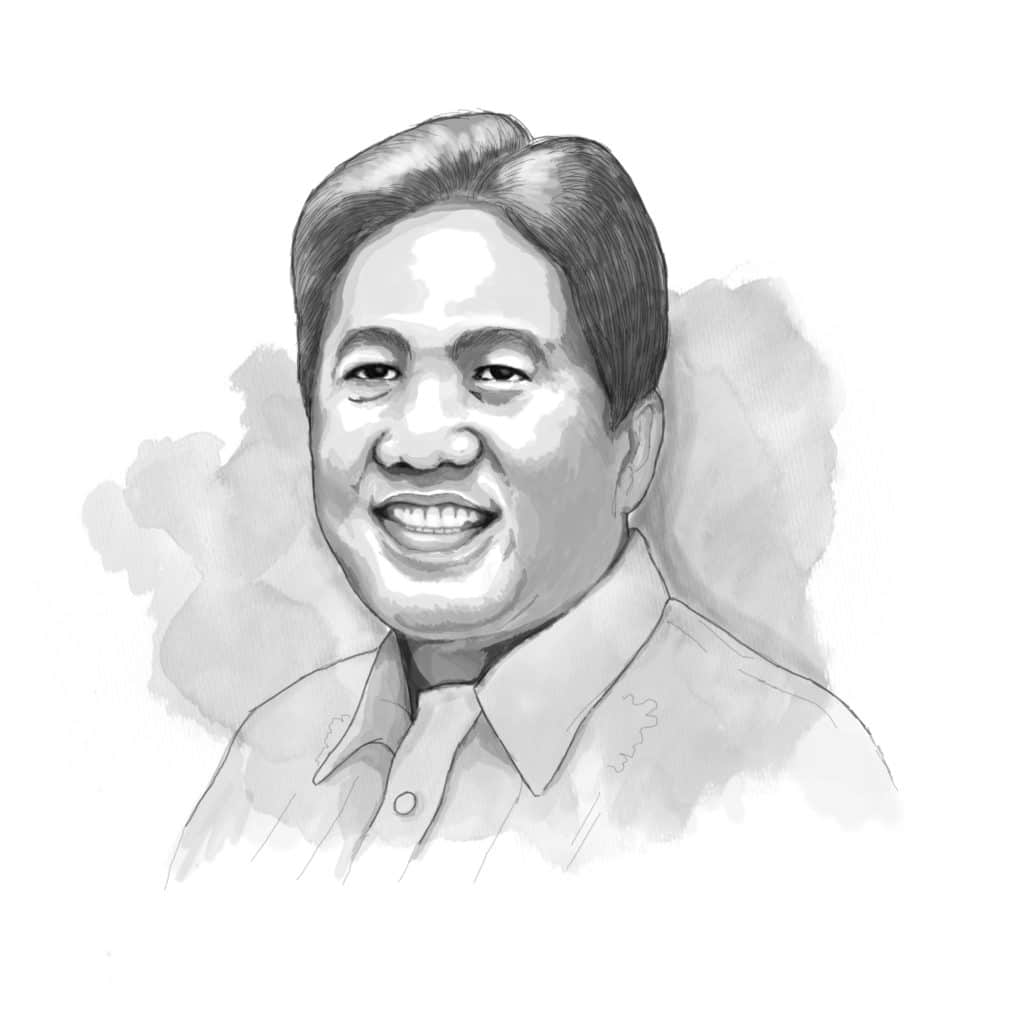ENDEAVOR

At around 10 a.m. on Friday, Sept. 22, 1972, I joined a big crowd gathered at the steps of Palma Hall, more popularly known then as the building of the College of Arts and Sciences (AS) in the University of the Philippines (UP) Diliman campus. Wearing a barong with rolled up sleeves, Senator Benigno ‘Ninoy’ Aquino warned the students about the scenario for the imminent declaration of martial law.
The day before, a huge crowd, estimated at 50,000, attended a rally in Plaza Miranda led by the Movement of Concerned Citizens for Civil Liberties (MCCL) headed by Senator Jose ‘Pepe’ Diokno. Shortly after I arrived home past midnight on Sept. 23, I was brought to Camp Crame by officers of the Philippine Constabulary Metropolitan Command (PC Metrocom), where I was detained for 47 days until I was released on Nov. 9, 1972.
Fast forward to June 11, 2016, at Fort Magsaysay, Laur, Nueva Ecija.
As Press Secretary, I accompanied President Benigno ‘Noynoy’ Aquino III. He has gone there for the videotaping of his Araw ng Kalayaan speech the following day in Malacañan Palace during the traditional Freedom Day vin d’honneur program. In his speech, he urged Filipinos to cherish their hard-earned freedoms and to be vigilant against threats to democracy. Why did he opt to revisit Fort Magsaysay just over two weeks before the end of his presidency?
During the martial law regime, his father, Ninoy Aquino was brought to Fort Magsaysay together with Pepe Diokno. Here is an account from the Martial Law Museum website, attributed to Miguela Yap’s book, The Making of Cory:
“While detained, Ninoy penned 10 open letters against the Marcos regime and smuggled them out through Cory to be published in the Bangkok Post; this earned Ninoy and his companion Jose ‘Pepe’ Diokno time in solitary confinement.
On March 12, 1973, Ninoy, along with Pepe Diokno, was brought to a helicopter bearing the presidential seal, handcuffed, and blindfolded. He was transported to Fort Magsaysay in Laur, Nueva Ecija to be put in solitary confinement. As Ninoy recalled: “I found myself inside a newly painted room, roughly four by five meters with barred windows, the outside of which was boarded with plywood panels.”
“Ninoy was stripped naked and issued only two t-shirts and a pair of underwear to be worn alternately. His other belongings including his wedding ring and his eye glasses were taken away and given to his family without explanation. He and Diokno endured 30 days in solitary confinement.
On Aug. 27, 1973, Ninoy was brought back to Fort Bonifacio where he faced a Military Tribunal on charges of murder, illegal possession of firearms, and subversion. Ninoy, however, refused to participate in the trial, calling it “an unconscionable mockery.” Rather than pleading not guilty, Ninoy delivered a speech denouncing the trial.”
The late publisher-journalist Max Soliven, who was also among those initially detained at Camp Crame upon the declaration of martial law, and who was later brought, too, to Fort Bonifacio recalled in his column Ninoy Aquino’s memorable speech before the military tribunal:
“Sirs: I know you to be honorable men. But the one unalterable fact is that you are subordinates of the President. You may decide to preserve my life, but he can choose to send me to death. Some people suggest that I beg for mercy. But this I cannot in conscience do. I would rather die on my feet with honor, than live on bended knees with shame.”
Five years later, while still imprisoned in Fort Bonifacio, Ninoy Aquino ran for the Batasang Pambansa elections in May 1978. Here’s another account from the Martial Law Museum:
“The climax of the campaign was the noise barrage in Metro Manila on April 6 the eve of the elections. As Sen. Nene Pimentel would later explain, the noise barrage was meant to demonstrate the people’s opposition to the regime even if their votes may not be counted. Catholic churches also participated by ringing its bells to signal the start of the protest. The organizers could not have anticipated its success as the boisterous expression of support for LABAN lasted well into the night. People banged pots and pans, sounded horns, and in some places put burned rubber tires.”
Ninoy was right. He and his allies may have lost the elections, but the exercise raised the consciousness of many Filipinos who, for more than a decade, had experienced first-hand what it was like not to enjoy their freedom of speech and expression.
I could still vividly remember that Sunday, Aug. 21, 1983. The temperature was sizzling hot. Yellow ribbons had been placed on homes and buildings following the lyrics of a popular song of that period. There was live radio coverage of Ninoy Aquino’s arrival at the Manila International Airport.
Then the news of his assassination at the tarmac broke out. Like millions of Filipinos, I was shocked and crestfallen – but this initial reaction was replaced by a firm resolve that would soon find resonance throughout the land.
I joined those who paid their last respects at the Sto. Domingo Church. The muffled mourning rose into a crescendo of quiet rage during his funeral procession on Aug. 31, 1983 that lasted for over 12 hours before he was laid to rest at the Manila Memorial Park in Parañaque.
Today, the main gateway to the Philippines is the Ninoy Aquino International Airport (NAIA) in memory of the great person who showed the world that indeed, “The Filipino is worth dying for.”